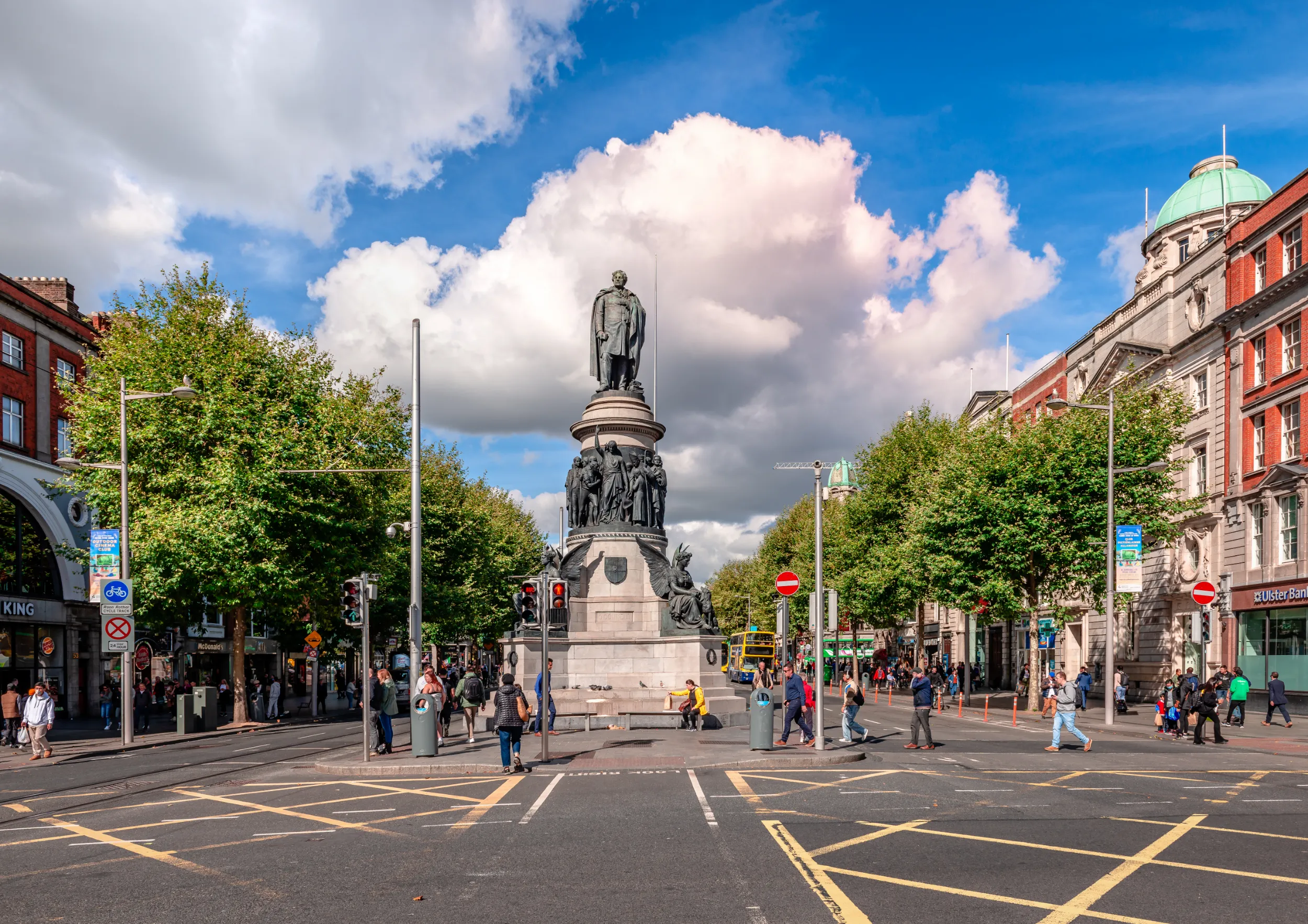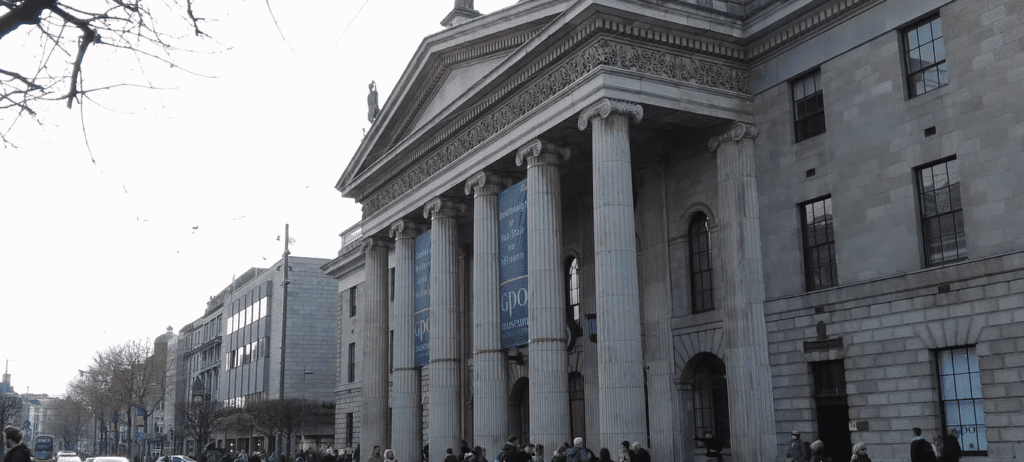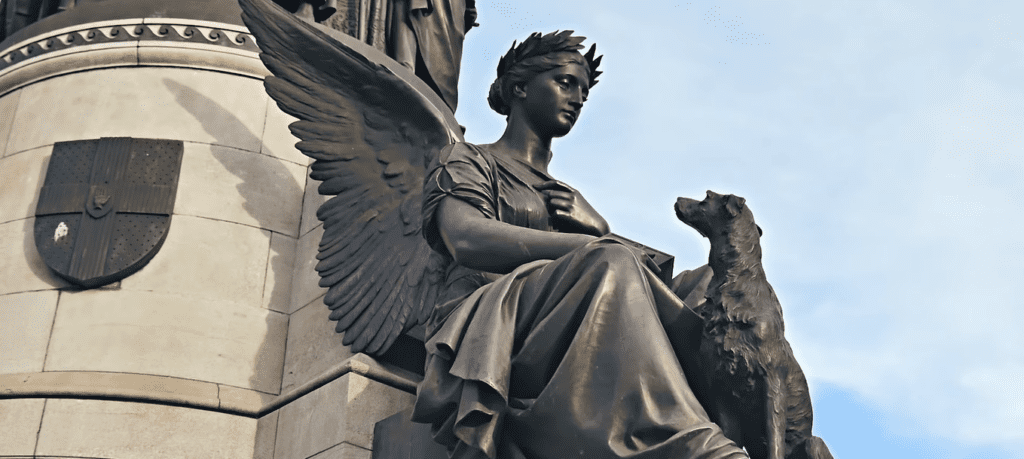O’Connell Street, Dublin, Ireland

Updated On: March 28, 2024 by Ciaran Connolly
In the heart of Dublin, Ireland lies a boulevard that pulses with the lifeblood of the city – O’Connell Street. Stretching majestically from Parnell Square in the north to O’Connell Bridge and the River Liffey in the south, this grand thoroughfare is more than just a street; it’s a living testament to the Irish people’s history, culture, and resilience.
Named after Daniel O’Connell, one of Ireland’s most revered political figures, O’Connell Street weaves a tapestry of narratives that span centuries. From the tumultuous days of the Irish struggle for independence to the vibrant present-day metropolis, this iconic boulevard has witnessed triumphs, tragedies, and the everyday moments that define Dublin’s spirit.
As one embarks on a journey down O’Connell Street, they embark on a voyage through time. The street’s architecture is a visual chronicle of Dublin’s past, with elegant Georgian townhouses standing shoulder-to-shoulder with modern marvels like the Spire of Dublin. But beyond its architectural splendour, O’Connell Street is a cultural crossroads, where art, music, and literature converge to create a vibrant tapestry of creativity and expression.
Yet, perhaps most importantly, O’Connell Street is a place of memory and meaning. It is where the echoes of Daniel O’Connell’s impassioned speeches still resonate, the ghosts of rebels and revolutionaries still walk, and the spirit of Dublin finds its most exuberant expression. In this article, we will delve deeper into the rich tapestry of O’Connell Street, exploring its history, landmarks, and the vibrant life that courses through its veins. Join us as we uncover the secrets of one of Dublin’s most beloved thoroughfares – O’Connell Street.
A Stroll Through History
Walking down O’Connell Street, they are transported through time, surrounded by architectural wonders and historical landmarks. At its northern end lies the imposing General Post Office (GPO), an iconic symbol of Irish independence. It was here, during the Easter Rising of 1916, that Irish rebels proclaimed the establishment of an Irish Republic. Today, the GPO stands as a museum and a reminder of the nation’s struggle for freedom.
Continuing southwards, one encounters the Spire of Dublin, also known as the Monument of Light. This towering stainless-steel structure, rising 120 meters into the sky, is a modern landmark, contrasting with the street’s historic buildings. Its sleek design has sparked admiration and controversy since its erection in 2003, but it has undoubtedly become an integral part of the city’s skyline.
Architectural Marvels of O’Connell Street

O’Connell Street boasts an eclectic mix of architectural styles, reflecting the city’s diverse heritage and tumultuous past. Elegant Georgian townhouses, with their distinctive red-brick facades and sash windows, line the street, offering glimpses into Dublin’s prosperous past. These buildings, once the homes of wealthy merchants and aristocrats, now house shops, restaurants, and offices, adding to the street’s vibrant atmosphere.
Among the architectural gems of O’Connell Street is the historic Clerys department store. Founded in 1853, Clerys has long been a beloved institution in Dublin, offering luxury goods and impeccable service to generations of shoppers. Its elegant neo-classical facade and grand interior reflect the luxury of a bygone era, making it a must-visit destination for tourists and locals alike.
Cultural Hub

Beyond its architectural splendour, O’Connell Street is a cultural hub pulsating with life and energy. The street teems with theatres, galleries, and museums, offering a wealth of artistic experiences to visitors. The Gate Theatre, founded in 1928, has earned international acclaim for its innovative productions of classic and contemporary works. Meanwhile, the Hugh Lane Gallery showcases an impressive Irish and international art collection, including works by renowned artists such as Francis Bacon and Jack B. Yeats.
Music also thrives on O’Connell Street, with numerous pubs and music venues hosting live performances throughout the week. From traditional Irish folk music to cutting-edge indie bands, there is something to suit every musical taste. The street comes alive during festivals such as the Dublin Fringe Festival and the St. Patrick’s Day Parade, attracting performers and revellers from around the world.
Political Heartbeat
As the main thoroughfare of Dublin, O’Connell Street has witnessed many pivotal moments in Irish history, both political and social. Here, Daniel O’Connell, known as “The Liberator,” rallied the masses in the fight for Catholic emancipation and Irish independence in the 19th century. His statue, standing proudly at the southern end of the street, serves as a reminder of his enduring legacy.
In more recent times, O’Connell Street has been a focal point for protests and demonstrations, giving voice to the concerns of the Irish people. The street has provided a platform for grassroots activism and political expression, from civil rights marches to anti-austerity protests. The statue of Jim Larkin, the renowned trade union leader, is a testament to the struggles of the working class and the fight for social justice.
The Spirit of Dublin
What truly sets O’Connell Street apart is its spirit – a blend of resilience, creativity, and warmth that embodies the essence of Dublin itself. It is a street where history and modernity coexist, tradition meets innovation, and people from all walks of life come together to celebrate life and community.
Whether you’re strolling along its broad pavements, admiring its architectural wonders, or simply soaking in the vibrant atmosphere, O’Connell Street leaves an indelible impression on all who visit. It is more than just a street – it is the beating heart of Dublin, pulsating with the energy of a city that refuses to be confined by its past and instead looks towards a future filled with promise and possibility.
Discovering Dublin’s Cultural Corridor
In addition to the grandeur of O’Connell Street itself, numerous attractions and points of interest are nestled in its vicinity, enriching the experience for visitors and locals alike. Here are some notable attractions near O’Connell Street:
1. Dublin Writers Museum: Located just a short stroll away on Parnell Square, the Dublin Writers Museum celebrates Ireland’s rich literary heritage. Housed in an elegant 18th-century Georgian mansion, the museum showcases the lives and works of famous Irish writers such as James Joyce, Oscar Wilde, and W.B. Yeats through exhibits, manuscripts, and personal belongings.
2. Garden of Remembrance: Situated at the northern end of Parnell Square, the Garden of Remembrance is a tranquil oasis dedicated to the memory of those who fought for Irish independence. Designed by the renowned architect Daithí Hanly, the garden features a reflective pool, sculptures, and symbolic artworks, providing a space for quiet contemplation and remembrance.
3. James Joyce Centre: For literary enthusiasts, the James Joyce Centre offers a fascinating insight into the life and works of one of Ireland’s most celebrated writers, James Joyce. Located on North Great George’s Street, just a short distance from O’Connell Street, the centre hosts exhibitions, lectures, and walking tours exploring Joyce’s Dublin and the characters that populate his iconic novels.
4. Hugh Lane Gallery: Situated on Parnell Square North, the Hugh Lane Gallery houses an impressive collection of modern and contemporary art, including works by Irish and international artists. Highlights include pieces by renowned Irish painter Jack B. Yeats and the Francis Bacon Studio, meticulously reconstructed within the gallery walls.
5. Dublin City Hall: A short walk across O’Connell Bridge leads to Dublin City Hall, an architectural gem that offers insight into the city’s history and governance. Visitors can explore the elegant Georgian interiors, discover historical artefacts, and learn about Dublin’s evolution from Viking settlement to modern metropolis through interactive exhibits and guided tours.
6. National Leprechaun Museum: Just a stone’s throw from O’Connell Street on Jervis Street, the National Leprechaun Museum offers a whimsical journey into Irish folklore and mythology. Visitors can immerse themselves in larger-than-life installations and interactive storytelling sessions that bring Ireland’s rich cultural heritage to life, making it a must-visit for families and fantasy enthusiasts alike.
7. Dublin Castle: A short walk southwards from O’Connell Street brings you to Dublin Castle, a historic complex that has served as a symbol of British rule, Irish sovereignty, and political power throughout the centuries. Explore the State Apartments, wander through the Dubh Linn Gardens, and delve into the castle’s storied past through guided tours and exhibitions.
These attractions, among many others, complement the vibrant tapestry of O’Connell Street, offering visitors a diverse array of cultural, historical, and artistic experiences within easy reach of Dublin’s bustling thoroughfare. Whether exploring the literary legacy of Ireland’s great writers, reflecting on the nation’s turbulent history, or simply enjoying the beauty of Dublin’s architecture and green spaces, there is something for everyone to discover near O’Connell Street.
Conclusion
In the bustling heart of Dublin, O’Connell Street stands as more than just a thoroughfare; it is a living testament to the Irish people’s resilience, creativity, and indomitable spirit. From its humble beginnings as a simple street in the city’s heart to its current status as a cultural and historical icon, O’Connell Street has witnessed the ebb and flow of history, shaping and being shaped by the lives of those who walk its pavements.
As we conclude our exploration of this storied boulevard, we are reminded that O’Connell Street is more than just bricks and mortar; it is a repository of memories, a canvas for artistic expression, and a stage for political and social change. It is a street where the past intertwines with the present, tradition meets innovation, and where the soul of Dublin finds its most vibrant expression.
As visitors and locals alike stroll along its broad pavements, gazing up at its architectural wonders and soaking in its bustling atmosphere, they become part of a living tapestry that stretches back through the annals of time. For O’Connell, Street is not just a street – it is the beating heart of Dublin, where the past meets the present and the future unfolds before our eyes.
So, let us toast O’Connell Street – its history, heritage, and countless stories it has yet to tell. May it inspire, captivate, and enchant all who walk in its shadow, reminding us of the enduring power of place to shape our lives and destinies. Long may O’Connell Street reign as the soul of Dublin, a beacon of hope and a symbol of the eternal spirit of the Irish people.






